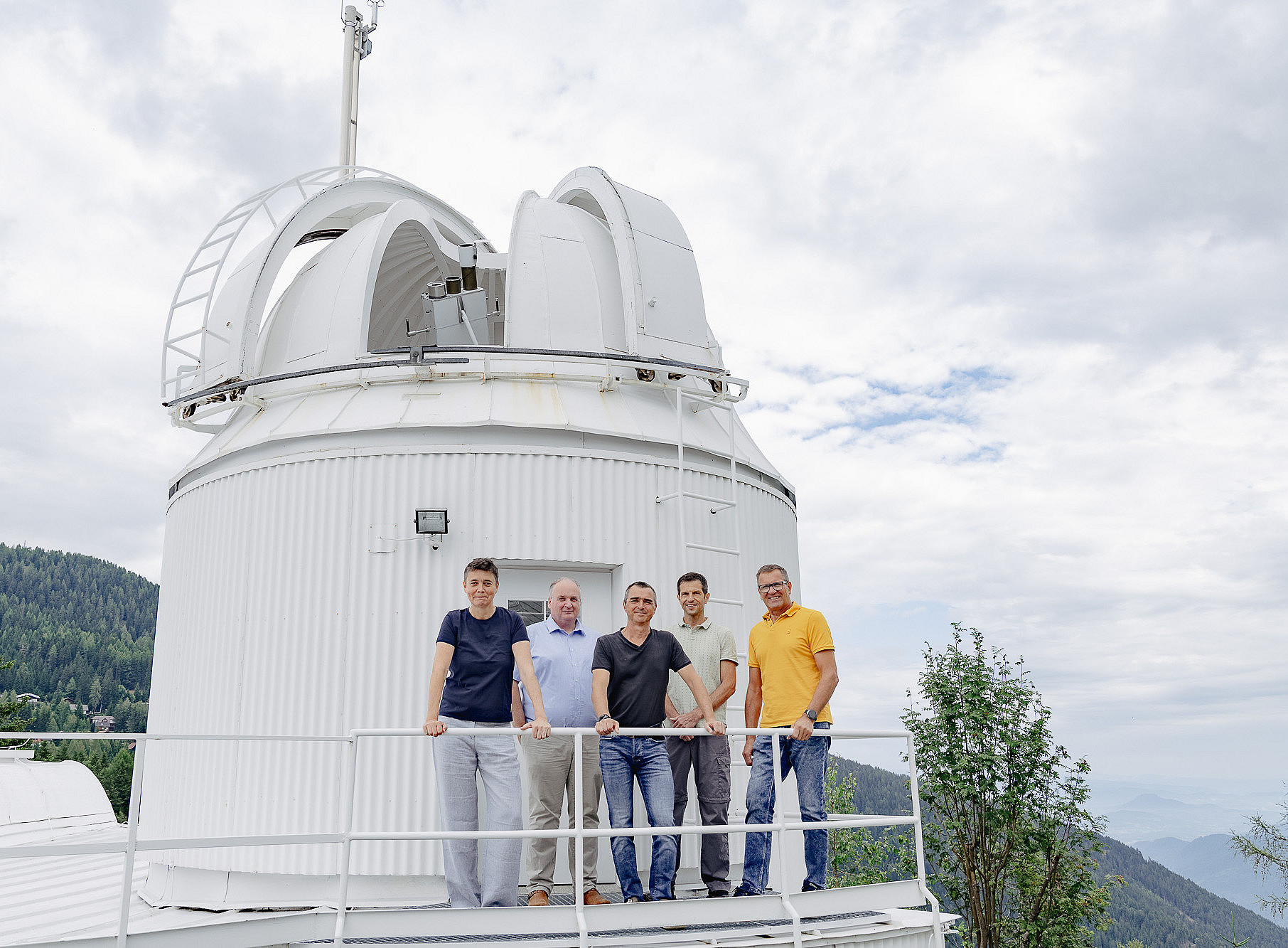It is exactly 191 kilometres from the campus of the University of Graz to the Kanzelhöhe mountain observatory on the Gerlitzen in Carinthia. From the small village of Treffen am Ossiacher See, a winding road leads up to 1526 metres above sea level. Once you reach the top, you are rewarded with a panoramic view from the Koralpe to the Turracher Höhe - if the visibility is good. An ideal place to enjoy the sun - or to study it.
The observatory is the workplace of astrophysicist Astrid Veronig, Dietmar Baumgartner, Werner Pötzi, Heinrich Freislich and Heinz Strutzmann. Every day when the sun shines, four telescopes with special filters are aimed at this star in order to observe it closely and learn new things about it. Almost 300 days a year. "It takes about eight minutes for sunlight to reach the earth," explains Astrid Veronig.
The Kanzelhöhe Observatory, which belongs to the Institute of Physics at the University of Graz, is unique in Austria. It was built by the German Air Force during the Second World War between 1941 and 1943. Even then, it was used to observe solar flares and the effects on radio communications, which were so important for air traffic. Today it is used for scientific purposes: in addition to researching solar activity, radiation measurements are also carried out.
Photos of the sun are taken every ten seconds with 4K cameras through the telescope's optics, archived and automatically made available to the global research community. "An important partner that receives data from us is the European Space Agency (ESA)," says the physicist. "Anyone interested can view current images of the sun on our website." Sunspots are of particular interest to the researcher. These areas on the surface of the sun, which are particularly influenced by the magnetic field, are responsible for solar eruptions - and they ultimately also determine space weather.
High-energy matter is hurled away from the surface of the star at several million kilometres per hour. The journey to Earth can then take up to three days. "Being able to predict space weather is crucial for different areas of life." Disturbed space weather has a negative impact on satellite communication and can disrupt electrical systems on Earth to such an extent that large-scale power outages occur. "Aviation is also dependent on what happens on the sun," explains the astrophysicist. "If strong solar storms are expected, flight routes have to be rescheduled."
A home-made telescope such as the one found at Kanzelhöhe is fitted with expensive, cutting-edge technology. Nevertheless, the process of documenting sunspots over the long term is seemingly banal. When the dome opens and the telescope is pointed directly at the sun, a mirror image of the celestial body is projected onto a white sheet of paper. "We then trace the visible spots on the paper with a well-sharpened pencil and make a handwritten note of the date and time," emphasises Werner Pötzi. There is a simple and plausible reason for this analogue procedure: "We record in the same way as Galileo Galilei did more than 400 years ago. This gives us a direct comparison with historical data to measure long-term changes in solar radiation and solar activity."
Thursday, 18 July 2024
